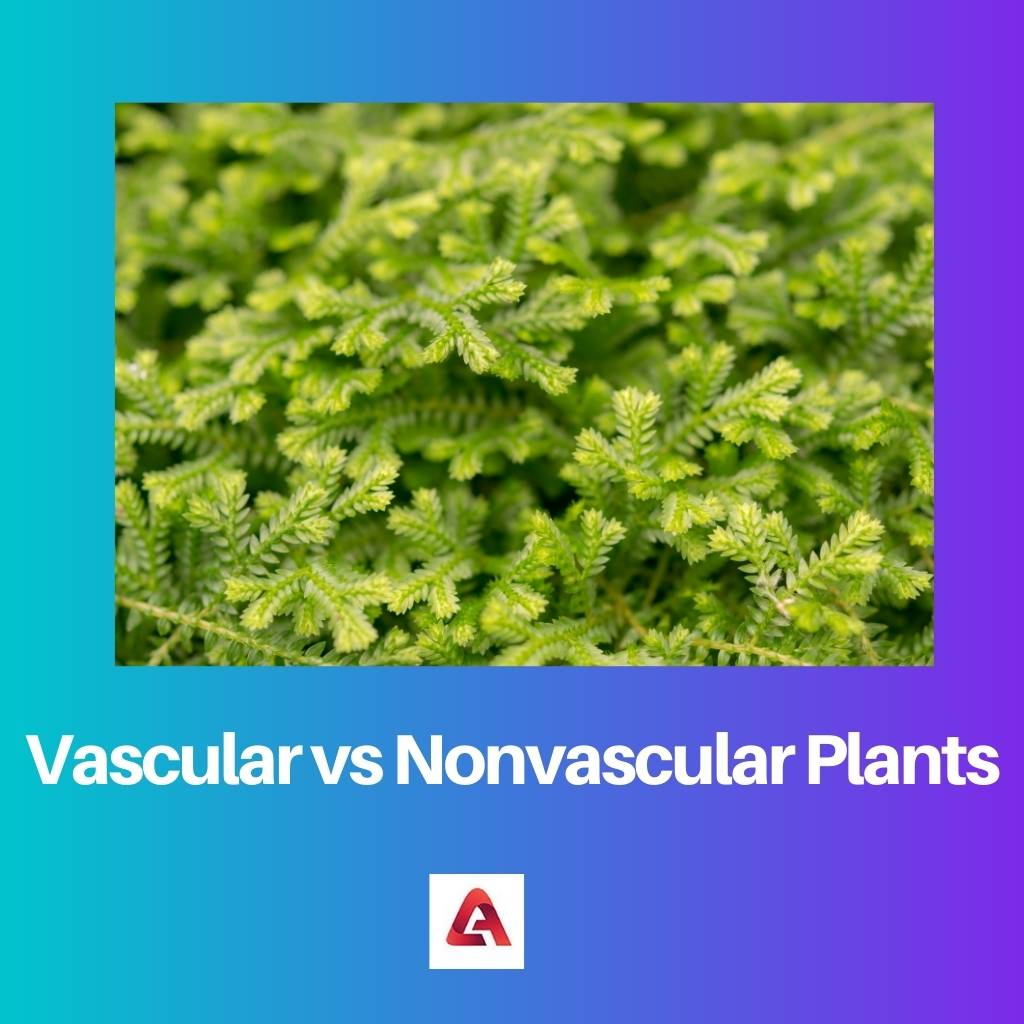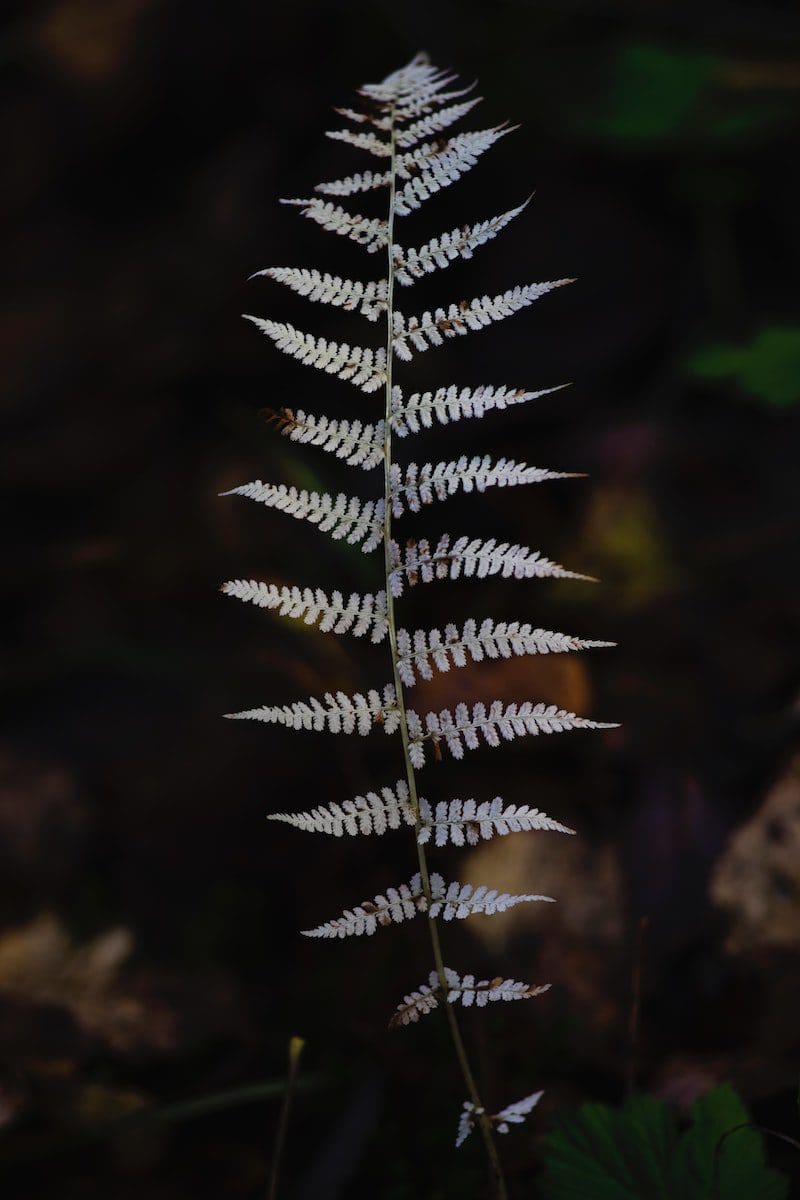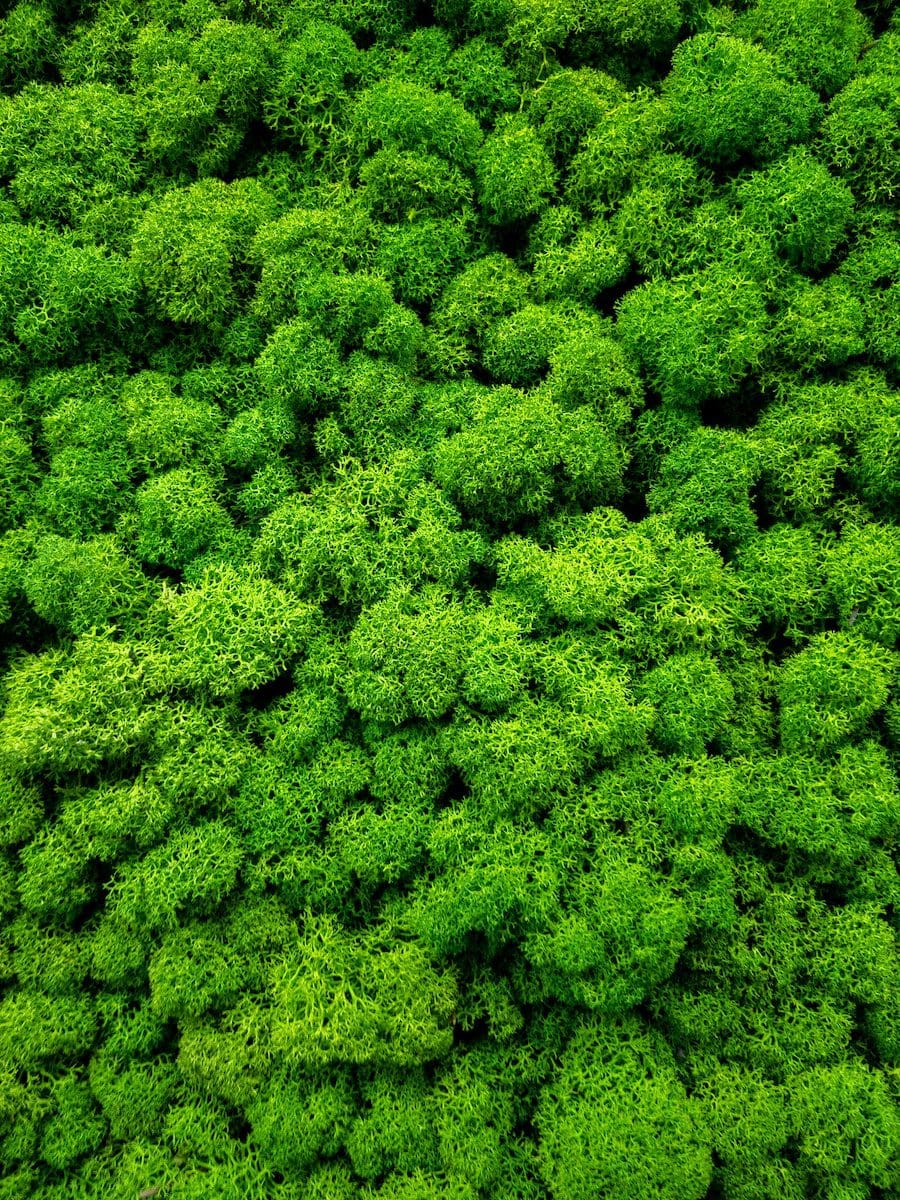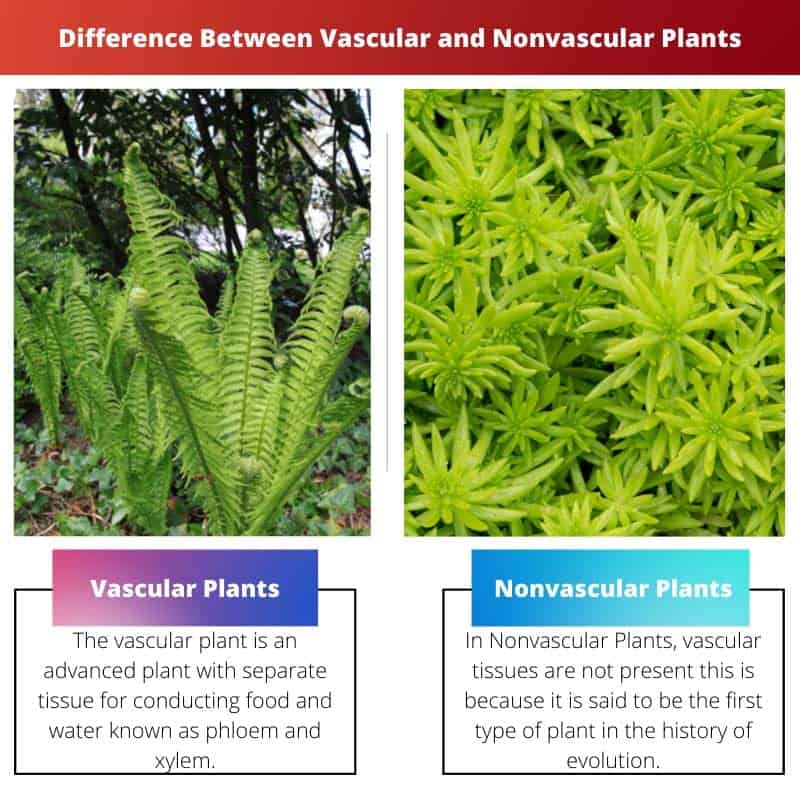There are varieties of plants. Some have similar characteristics, and some have different characteristics. They are categorized on the basis of their types of roots, vegetation they grow in, etc. among these categories are Vascular and Nonvascular Plants.
Plants under this category are differentiated on the basis of their vascular tissues and where they are found. Despite their difference, both of them have chlorophyll and chloroplasts.
Therefore they can make their food with the help of other essential ingredients.
Information related to these plants is listed below, along with all their differences.
Key Takeaways
- Vascular plants have specialized tissues for transporting water and nutrients, while Nonvascular plants do not have specialized tissues.
- Vascular plants are larger and more complex than Nonvascular plants.
- Vascular plants can grow taller than Nonvascular plants because of their specialized tissues.
Vascular vs Nonvascular Plants
Vascular plants have a specialized vascular tissue system that allows for the transport of water, nutrients, and other substances throughout the plant. Nonvascular plants lack a specialized vascular tissue system and rely on diffusion to transport water and nutrients throughout the plant.

Vascular plants are diverse plants that can be seen in multiple habitats. They are also called tracheophytes and are the advanced version of older plants.
They have cuticles and green leaves. They have lignified xylem tissue and sieved phloem tissue.
They have a strong and rigid body. Ferns, cycad, and rose are some examples of vascular plants.
Nonvascular plants are the older category of plants; they are also called bryophytes or lower plants. They are not found very frequently.
They do not have some features like vascular plants. Their body is not rigid but weak.
They do not have vascular tissues, and thus, cells are arranged in a lot simpler manner.
Comparison Table
| Parameters of Comparison | Vascular Plants | Nonvascular Plants |
|---|---|---|
| Diversity | More diverse | Fewer in number |
| Habitat | Can inhabit more than one environment | Damp and shady areas. |
| Cuticles | Have cuticles | Do not have cuticles |
| True leaves | Have true leaves | Does not have true leaves. |
| Example | rose, cycad, ferns, clubmosses, etc. | algae, liverwort, etc. |
What are Vascular Plants?
The vascular plant is an advanced plant with separate tissue for conducting food and water known as phloem and xylem, which are also called vascular tissue.
It forms a central column called a stele for conducting purposes. Due to the presence of this tissue, it is said that these plants have true roots, stems, and leaves.
Root helps the plant to absorb the nutrients and water from the soil.
The leaves of these plants have stomata, small openings that help in the process of transpiration and photosynthesis. The stem has tissue providing the plant protection and proper conduction or transportation of food and water.
They are capable of surviving on land due to their ability to transport food and water properly to all their parts. These plants produce diploid spores.
They are tall and strong. They are more evolved and thus believed to come later in the world.
The internal structure of these plants is well organized and has a complex cell structure. Different species of these plants have different characteristics.
Vascular plants are very common and can be found everywhere. It is believed to be an advanced version of nonvascular plants.

What are Nonvascular Plants?
In nonvascular plants, vascular tissues are not present this is because it is said to be the first type of plant in the history of evolution. And due to the absence of vascular tissue, it has only primitive parts; they are more likely to be found in water or shady areas.
They do not have true roots that can absorb water and nutrients from the soil and therefore are unable to stand still on land. Not only this, they do not have true leaves and stem also.
They absorb nutrients and minerals through the process of osmosis and diffusion. As it does not have true leaves, it cannot protect water or undergo transpiration.
The stem of these plants cannot hold its body. They act as pioneer species as they don’t need proper water and nutrients for survival.
They can also grow on barren land. With techniques, they can grow like vascular plants too.
They are advantageous to us in many ways, as despite their structure, they provide oxygen to the environment, provide microhabitats for many other species, break down rocky terrain into the soil, have antifungal qualities, filter groundwater, and do not need more attention.

Main Differences Between Vascular and Nonvascular Plants
- Vascular plants can survive easily in an environment as compared to nonvascular plants. Therefore vascular plants can be found in several environments, while nonvascular plants are more likely to be found in a damp and shady environment.
- The arrangements of cells in vascular plants are complex, whereas in nonvascular plants, the cells are arranged in a simpler manner.
- Vascular plants have a strong lignified tissue system, due to which they are strong and rigid, whereas such a tissue system is not present in nonvascular plants, and that is the reason they are tender and shorter.
- Vascular plants produce spores that are diploid, whereas nonvascular plants produce gametes that are haploid.
- In vascular plants, roots absorb water and nutrients from the soil only, while in nonvascular plants, nonvascular absorb these nutrients through the process of osmosis and diffusion.
- Vascular plants have a normal stem with a multilayer of xylem and phloem, whereas no true stem is found in non-vascular plants. Along with it, nonvascular plants do not have true leaves like vascular plants.
- Vascular plants have cuticles protecting them from desiccation, whereas no such cuticles are present in nonvascular plants.
- Nonvascular plants are said to be the first type of plant on earth, and that is the reason they are not advanced and properly developed like vascular plants.
- Nonvascular is among the pioneer species due to its older evolution, whereas vascular is not among this group.
- Examples of vascular plants are clubmosses, grasses, etc., and nonvascular plants are algae, liverwort, and hornwort, etc.




